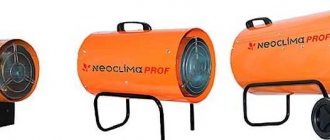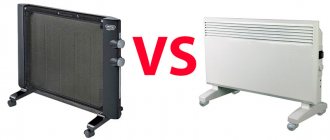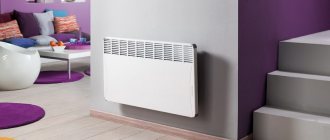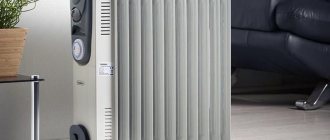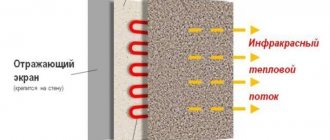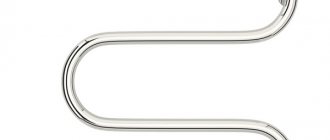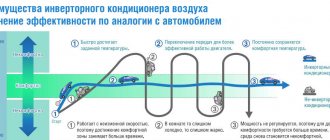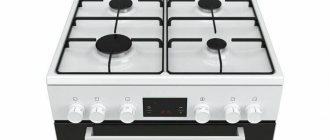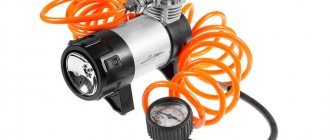Additional heat sources most often turn out to be relevant in conditions where the possibility of installing heating systems is not provided. There are many alternative offers on the market, among which the favorites stand out. One of the main dilemmas is the question: what is better to choose, a heat gun or an infrared heater? Let's try to solve it.
Features of the devices
The task of both devices is to create a comfortable and warm atmosphere in the room. But the principle of achieving the goal will be different. It's all about the peculiarities of the functioning of the technology.
Heat gun
There are many types of such devices, each differing only in the type of fuel used. Most often they use fire or electricity. All of them have one thing in common - heating will be supplied under pressure from the air masses. In practice, working “with fire” will look like this:
- A jet of fuel is supplied under pressure into the combustion chamber.
- The fan creates a flow of air that is directed to already heated heat sources.
- The air heats up to about 200 degrees. The temperature of the chamber itself at that moment reaches 800 degrees.
- The jet burns in the air flow.
- The waste product (carbon monoxide) is removed into the chimney pipe.
- Electricity is used, which is needed to rotate the engine fan and fuel pump.
It is very important to take into account all fire safety rules during installation.
The device can also be powered by current. If a heat gun is used as an electric heater, then it is quite suitable for residential premises (being safer in everyday life). Only in this case, heating elements made of ceramics and stainless steel are used.
A heat gun heats a room with point-by-point, constant blows. Instead of cores, it uses air currents. The operating power allows you to warm up large areas of the room in a matter of minutes.
Operating principle of a heat gun
Infrared equipment
The operation of an infrared radiation source is based on the action of electromagnetic waves. They have a certain length that corresponds to the spectrum. An interesting fact is that the effect will only be on non-reflective objects - if the surface turns out to be shiny, white and transparent, it will remain cold.
The air itself will then be heated by objects - and this is a big plus of the device. Even after turning off the device, the atmosphere will remain pleasantly warm for a long time (ventilating the room will not interfere with this). This means we can talk about saving energy costs spent on heating.
There are other advantages to using such effective devices:
- environmental friendliness (oxygen is not burned and there is no unpleasant odor);
- ease of installation;
- versatility and aesthetics.
However, there are some downsides - as soon as you step out of your comfort zone, you feel cold. And if such an IR heater is placed incorrectly, then a headache may occur. It appears due to resonances of the thermal zones of the body, especially when only one part of it is heated. But doctors are simply sure that it is precisely such devices that are the culprits of dry skin and question the safety of staying near infrared radiation for a long time.
Operating principle of an infrared heater
What is better: a heat gun or a space heater?
Are you faced with choosing a heating device? Is it better to buy an old and proven oil heater or explore new devices. If your task is to purchase a powerful device, then you will probably pay attention to a heat gun. It is a reinforced type of fan heater. What is better: a heat gun or a space heater?
Features of heaters
Heating devices come in various types. These include oil and infrared heaters, convectors, fans and fireplaces. Let's look at the most popular types. An oil radiator gives off heat through oil heated inside it by an electric coil. This heater is distinguished by the fact that it is produced in a floor-standing type and does not burn oxygen.
Convectors, as a rule, are mounted on the wall. And the lower to the floor it is placed, the greater the thermal effect that accompanies its operation. This type of heating device uses a heating element to heat the air inside. After which it, exiting through the grille on the body, spreads throughout the room. Its advantages include fast, within 1 minute. The wall behind it heats up to 45°C, so the convector can be hung on a wooden surface.
If you think that a heat gun or a convector is better for a children's room, then the choice is definitely in favor of the second device. It will create a comfortable temperature in the room and operates absolutely silently. Plus, the convector is safe, since its body does not heat up too much.
What is a heat gun for?
The power of this device is sufficient to heat large and cold rooms. It is indispensable where it is necessary to increase the temperature in a short period of time. For example, an electric model will be needed during the winter renovation of an apartment. It will quickly dry plaster and paint. This device does an excellent job of heating cottages and greenhouses, garages and tents for various purposes.
Which is better to choose?
Infrared radiators are distinguished by the fact that they contain a special lamp with infrared irradiation. But it does not heat the air in the room, but objects nearby. With the help of such heating devices, it is possible to equip areas with local heating. They are used for suspended ceilings, heating baths and showers, verandas and balconies, cafes and restaurants.
If you think that a heat gun or an infrared heater is better for zone heating, then opt for the second device. Get the following benefits: energy saving, electricity, no noise during operation.
A heat gun is much more powerful than all other devices. In a short time, it can be used to heat the entire space where it is installed. This is an excellent option for large areas. For example, for warehouses, production workshops, greenhouses. But its heat only spreads during operation. As soon as the heat gun turns off, the temperature in the room begins to decrease. Therefore, be prepared to consume electricity.
Scope of application of heat guns
Not all objects can be heated (and in some cases, for example, in open spaces, it is even pointless to do this). A heat gun can help out here.
The fuel used imposes some restrictions on the scope of application of such devices. This is especially clearly seen in the case of gas options - they are used in rooms where people are not constantly present. Most often these are warehouses, industrial premises, trading floors, pavilions and construction sites.
Electrical units also have their own specifics. First of all, we must remember the high cost of electricity - it is rational to use them only for local heating or in rooms with a small square footage. For the latter case, compact models are used (the device will have a power of only 2-3 kW). There is also a limitation on the temperature range - from -10 to 35°C, which you also need to pay attention to.
Design and principle of operation of the fan heater
A fan heater is a modern version of a reflector, which was widely used earlier, 30-40 years ago, to heat the air in an apartment or country house.
The modern fan heater is very popular among consumers. This is an inexpensive but very effective device. It can quickly warm up the air in the room and thereby make the environment comfortable.
It is not difficult to guess what the principle of operation of the device is. This is clear even from the name. After all, the air heated by the electric element is supplied to the room, since the built-in fan operates.
- Wall-mounted. - Floor-mounted. - Ceiling-mounted. - A device for thermal curtains, which is usually located above the door.
1. Electric spiral. Can heat up to 800 degrees.2. Ceramic tile. Can heat up to 200 degrees.3. Tubular heater. Operating temperature is approximately 200 degrees.
Possibility of using infrared heaters
Such equipment can run on electricity, gas, and even liquid (for example, diesel) fuel. Each type is good for a specific area of application.
- For example, a gas or liquid fuel model can be used in cases where heating of open areas is needed, for example, an outdoor cafe or a children's playground. For an area of 25 square meters, a device with medium power is quite suitable. The radiation in such models will be quite high-energy, so it is better for people to stay in such a room for a short time.
- The electric option is more suitable for home use - here the heating element will operate at a low temperature. And the waves produced are similar in length to those emitted by people themselves. The bonus will be the absolute durability and safety of its service.
Experts advise installing an infrared heater on the ceiling or other maximum elevation of the serviced area. This will help the emitters heat more space, and not just those objects that are encountered “on the way.”
How to choose the right device
It doesn’t matter which source the consumer chooses. The main thing is quality products. You can’t “look” at the low cost - such savings are absolutely not justified, since the product will be filled with low-quality wires and poor contacts. Quality products can be determined by the following characteristics:
- strong and reliable body;
- thick insulated cable;
- great fork.
Questionable devices not only carry the risk of quickly failing, but the main danger here is the possibility of a short circuit. The consequence could be a fire, so you shouldn’t skimp on your own life.
Fan heaters - operating principle, pros and cons
- It works by creating noise. This is especially true for installations that have high power.
— There is an unpleasant smell. It occurs when dust and debris gets on the heating element. This is especially true for models with an open spiral. And for low-cost devices.
- Pollutes the environment. This occurs due to the fact that oxygen and dust are burned on a hot open spiral.
- Possible overheating. Especially when the device works for a long time and constantly.
— Air humidity decreases. Note that this drawback is inherent in all heaters, since due to an increase in temperature, the air loses moisture.
IMPORTANT! Please note that the cleanest air is created by devices that have a ceramic heating element. Fan heaters with an open spiral pollute the air the most.
The only significant drawback of the device is that it does not heat the air very quickly to the level that you need. This is because it has little potential for natural convection. This is why a convection heater has difficulty heating a high room.
The device is also afraid of power surges. If it works in drafts, then interruptions occur.
IMPORTANT! Due to the large area of the heating element, the air heats up quickly, but the heater does not maintain the temperature. And as soon as you turn off the convector, the room cools down. Very fast. To have a stable temperature regime, you need to buy a high-quality model that has a thermostat and protection against overheating.
